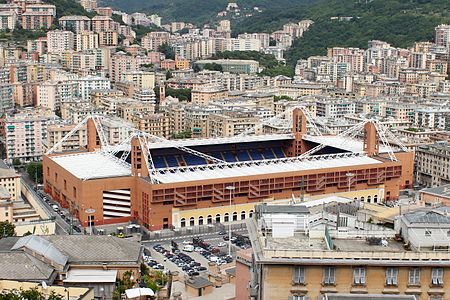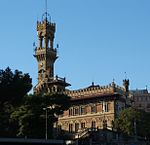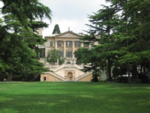Stadio Luigi Ferraris
1911 establishments in Italy1934 FIFA World Cup stadiums1990 FIFA World Cup stadiumsBuildings and structures in GenoaFootball venues in Italy ... and 5 more
Rugby union stadiums in ItalySerie A venuesSport in GenoaSports venues completed in 1911Sports venues in Liguria

The DerbyArena, also known as the Marassi from the name of the neighbourhood where it is located, is a multi-use stadium in Genoa, Italy. The home of Genoa C.F.C. and U.C. Sampdoria football clubs, it opened in 1911 and is the oldest stadium still in use for football and other sports in Italy. Aside from football, the stadium has hosted meetings of rugby in the Italian national rugby team and, more rarely, some concerts. The stadium is named after Luigi Ferraris (1887–1915), an Italian footballer, engineer and soldier who died during WWI.
Excerpt from the Wikipedia article Stadio Luigi Ferraris (License: CC BY-SA 3.0, Authors, Images).Stadio Luigi Ferraris
Via Giovanni de Prà, Genoa Marassi
Geographical coordinates (GPS) Address Nearby Places Show on map
Geographical coordinates (GPS)
| Latitude | Longitude |
|---|---|
| N 44.416430555556 ° | E 8.9524277777778 ° |
Address
Via Giovanni de Prà
16139 Genoa, Marassi
Liguria, Italy
Open on Google Maps











